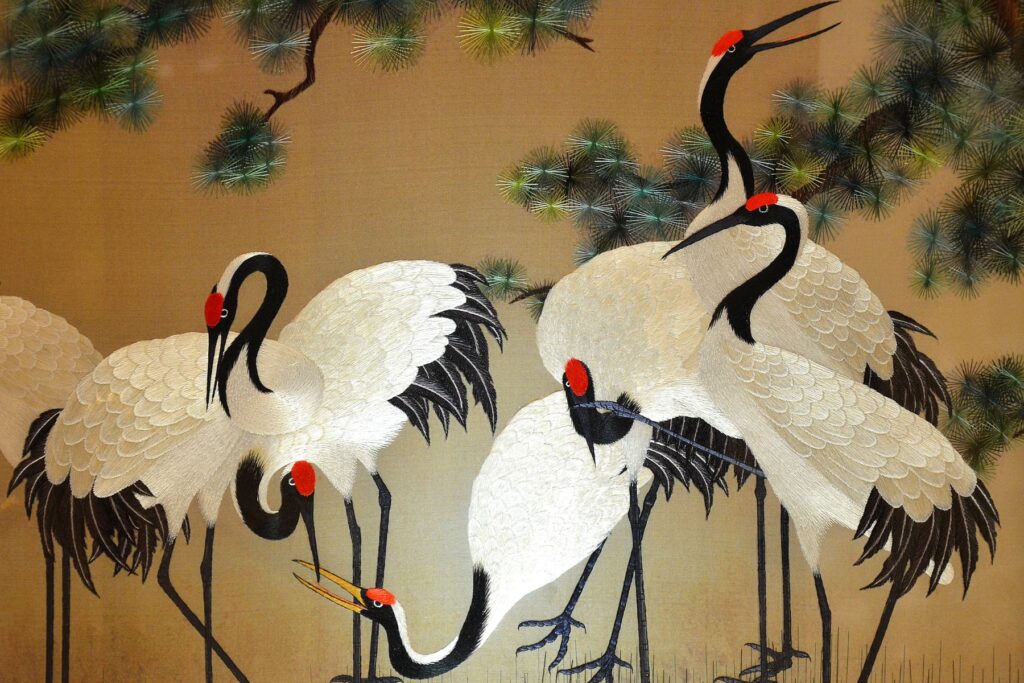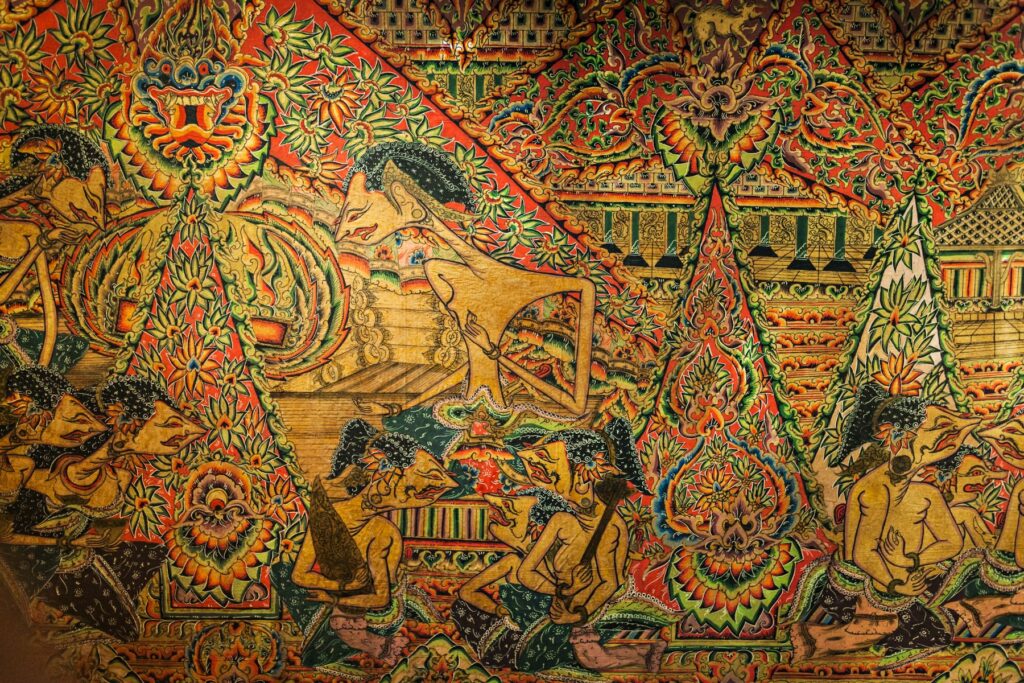WORKSHOPS
GET IN TOUCH
Learn the Art of Chinese Painting
Chinese painting is more than just art—it’s a philosophy, a meditative act, and a window into China’s cultural soul. Unlike Western traditions that often focus on realism and perspective, Chinese painting is about expressing the spirit of the subject. It’s not about copying what you see, but revealing what you feel. Think of it as poetry with a brush.
This ancient tradition has evolved over thousands of years, yet it continues to inspire artists and collectors around the world. In this article, we’ll walk you through the rich history, key styles, famous painters, and modern relevance of Chinese painting—making it approachable whether you’re an art enthusiast or just getting curious.


Early Foundations: Before the Tang Dynasty
Chinese painting has roots going back more than 6,000 years, to Neolithic pottery decorated with simple patterns and symbols. By the Han Dynasty (206 BCE – 220 CE), painters were already using silk as a medium, and subjects ranged from mythology to court life.
One of the earliest known painters, Gu Kaizhi (344–406), created elegant figure paintings that combined storytelling with visual grace. His scrolls are still studied for their emotional depth and line quality.
Tang and Song Dynasties: The Golden Age
By the Tang Dynasty (618–907), Chinese painting entered its classical age. Artists began developing landscape painting, or shanshui, meaning “mountain-water”. These works were not just beautiful scenes—they reflected the Daoist idea of humans being a small part of the vast natural world.
The Song Dynasty (960–1279) further refined these ideas. Court artists like Zhang Zeduan captured bustling cityscapes, while others painted misty mountains to express inner tranquility. The level of technical skill, detail, and spiritual expression from this period is astonishing.
Yuan, Ming, and Qing Dynasties: Literati and Court Styles
During the Yuan Dynasty (1271–1368), many artists were scholar-officials who turned to painting as a personal, expressive outlet—often retreating from society. This literati painting style emphasized personal feeling over formal technique. It often featured rough brushstrokes and poetic inscriptions.
In the Ming (1368–1644) and Qing (1644–1912) dynasties, both court and literati styles flourished. While court painters leaned toward detailed realism, scholar-painters focused on expressing ideals and emotions. This duality continues to shape how Chinese painting is viewed today.
Key Characteristics
Chinese painting stands apart because it doesn’t just aim to replicate the physical world. Instead, it captures qi—the life force or energy behind things. Here are some key features that define it:
- Brushwork matters more than realism. The stroke reveals the artist’s character and training.
- Ink is king. A single black ink, varied by water and brush pressure, can create a world of tone and emotion.
- Emptiness is powerful. What’s left blank in a painting often holds as much meaning as what’s painted.
- Calligraphy is inseparable. Poems, inscriptions, and signatures are part of the composition, not just additions.
Ultimately, Chinese painting is about conveying an essence—what lies beneath the surface.
Styles and Genres
Gongbi (工笔): The Meticulous Style
Gongbi is precise and richly coloured. It’s often used in imperial portraiture, bird-and-flower paintings, and detailed depictions of palace life. Every line is carefully drawn; mistakes are not welcome here. This style requires immense patience and technical skill.
Xieyi (写意): The Freehand or Expressive Style
Also called “sketching the idea”, xieyi is looser, more spontaneous, and expressive. It relies on bold brushstrokes and minimalism. Think of a few quick lines that capture the essence of a bird in flight, or the movement of bamboo in the wind.
Landscape Painting (Shanshui)
Perhaps the most iconic genre, shanshui captures towering mountains, flowing rivers, and misty forests. But it’s not just about nature—it’s about inner peace, philosophical reflection, and cosmic balance.
Bird-and-Flower Painting (花鸟画)
From fluttering sparrows to blossoming peonies, this genre celebrates life’s beauty and symbolic meaning. Different plants and animals represent virtues like loyalty, purity, or resilience.
Figure Painting
Though less dominant than landscapes, figure painting has always been present. From Gu Kaizhi’s gentle ladies to Buddhist scrolls and historical portraits, human subjects offer glimpses into stories and personalities.
Materials and Techniques
Traditional Chinese painters work with what’s called the “Four Treasures of the Study”:
- Brush – Varying in size and stiffness, each brush offers different textures.
- Ink Stick – Solid ink ground on an inkstone and mixed with water.
- Paper – Often Xuan (rice) paper, prized for its absorbency.
- Inkstone – Used to grind the ink stick and hold the ink.
Silk is also a common surface, especially in earlier works. Paintings are mounted in formats such as hanging scrolls, handscrolls, albums, or fans. Each format invites different ways of viewing and appreciating the artwork.
A key part of Chinese painting is brush control. One stroke can suggest the ripple of water or the weight of a mountain. Mastery comes from years—often decades—of disciplined practice.
Philosophy and Spirituality in Chinese Painting
You can’t really understand Chinese painting without dipping into its philosophical roots. Daoism, Confucianism, and Buddhism all play a role.
- Daoism teaches us to live in harmony with nature. That’s why landscapes aren’t just backdrops—they’re central characters.
- Confucianism stresses order, respect, and morality, reflected in structured compositions and symbolic choices.
- Buddhism inspires serenity and detachment, often shown through solitary monks or vast empty spaces.
Artists strive to express their own moral integrity through their art. To paint was to reflect one’s soul, not just one’s skill. That’s why personal expression became so important, especially among literati painters.
Famous Painters Throughout the Ages
Here are just a few of the many artists who helped shape Chinese painting:
- Gu Kaizhi (344–406): Known for early figure painting and refined brushwork.
- Fan Kuan (c. 960–1030): A Song Dynasty master of monumental landscapes.
- Ma Yuan (c. 1160–1225): His “one-corner” compositions left large areas empty, inviting contemplation.
- Shen Zhou (1427–1509): A leading literati painter during the Ming Dynasty.
- Qi Baishi (1864–1957): Famous for his playful, vivid ink paintings of shrimp, flowers, and insects.
- Xu Beihong (1895–1953): Blended Chinese techniques with Western realism, especially in his powerful horse paintings.
Each artist brought something unique—whether in technique, philosophy, or subject matter.
Modern and Contemporary Chinese Painting
The 20th century brought massive change. Artists like Xu Beihong and Lin Fengmian studied abroad and began combining Western techniques (like perspective and oil painting) with Chinese traditions.
During the Cultural Revolution (1966–1976), traditional art was suppressed in favour of propaganda. But since the 1980s, there has been a revival. Today, many artists fuse tradition with innovation—mixing ink with digital media, photography, or performance.
Some internationally recognized names in modern Chinese painting include:
- Wu Guanzhong – Known for abstract ink landscapes
- Cai Guo-Qiang – Uses gunpowder to create explosive “paintings”
- Liu Dan – Combines classical brushwork with surrealist detail
Chinese painting continues to evolve—just like China itself.
Influence and Legacy
Chinese painting hasn’t just influenced Chinese culture—it’s shaped artistic traditions across Asia, particularly in Japan, Korea, and Vietnam. Techniques like ink wash and calligraphy-based painting were adopted and adapted in unique ways across the region.
Today, traditional Chinese paintings are held in major museums around the world—from the British Museum and the Met to the Palace Museum in Beijing. They are also highly valued in the international art market.
More importantly, Chinese painting remains a living tradition. Young artists continue to practice and reinterpret it, and collectors worldwide continue to find meaning in its graceful lines and spiritual depth.
Chinese painting is more than just beautiful brushwork—it’s a way of seeing and being. Through its landscapes, animals, figures, and empty spaces, it invites us to reflect on nature, on life, and on ourselves.
Whether you’re standing in front of a thousand-year-old scroll or watching a contemporary artist push ink across paper, you’re part of a living conversation—one that’s been unfolding stroke by stroke for millennia.